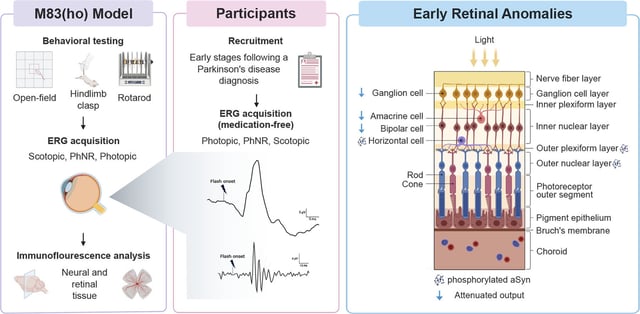Overview
- A study from Université Laval, published in *Neurobiology of Disease*, demonstrates that electroretinography (ERG) can detect Parkinson’s disease before motor symptoms appear.
- Researchers observed specific ERG anomalies in a cohort of 20 early-stage Parkinson’s patients, including differences in b-wave and photopic negative response amplitudes compared to controls.
- Experiments with transgenic mice overexpressing alpha-synuclein confirmed similar retinal impairments prior to motor symptom onset, supporting the translational potential of this approach.
- The retina, as a direct extension of the central nervous system, provides a non-invasive method to identify early neurodegenerative changes linked to Parkinson’s pathology.
- Ongoing research aims to validate these findings across larger, diverse populations and to assess the specificity of retinal biomarkers against other neurodegenerative diseases.

